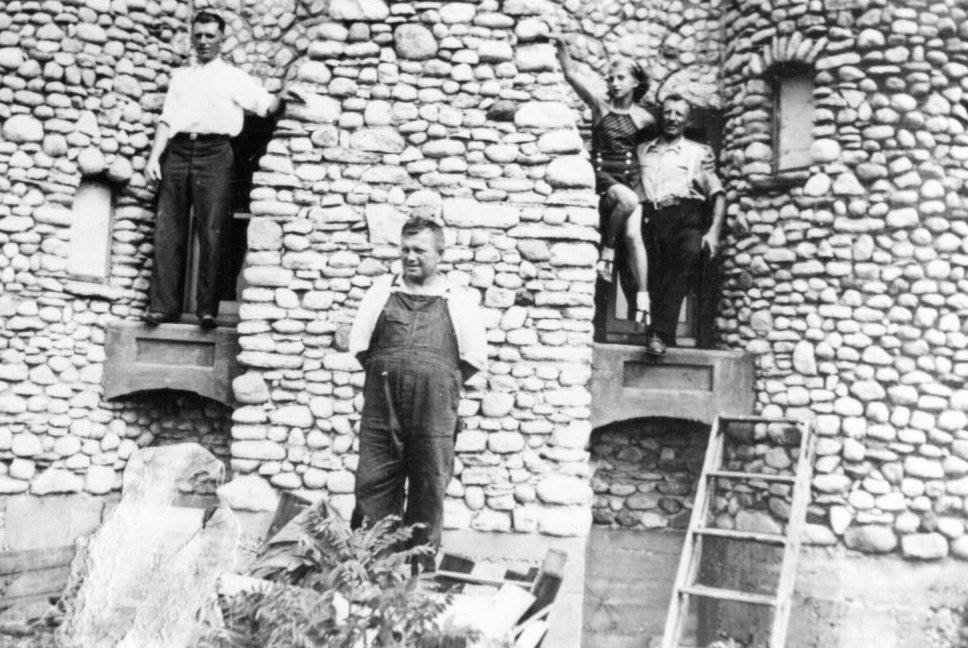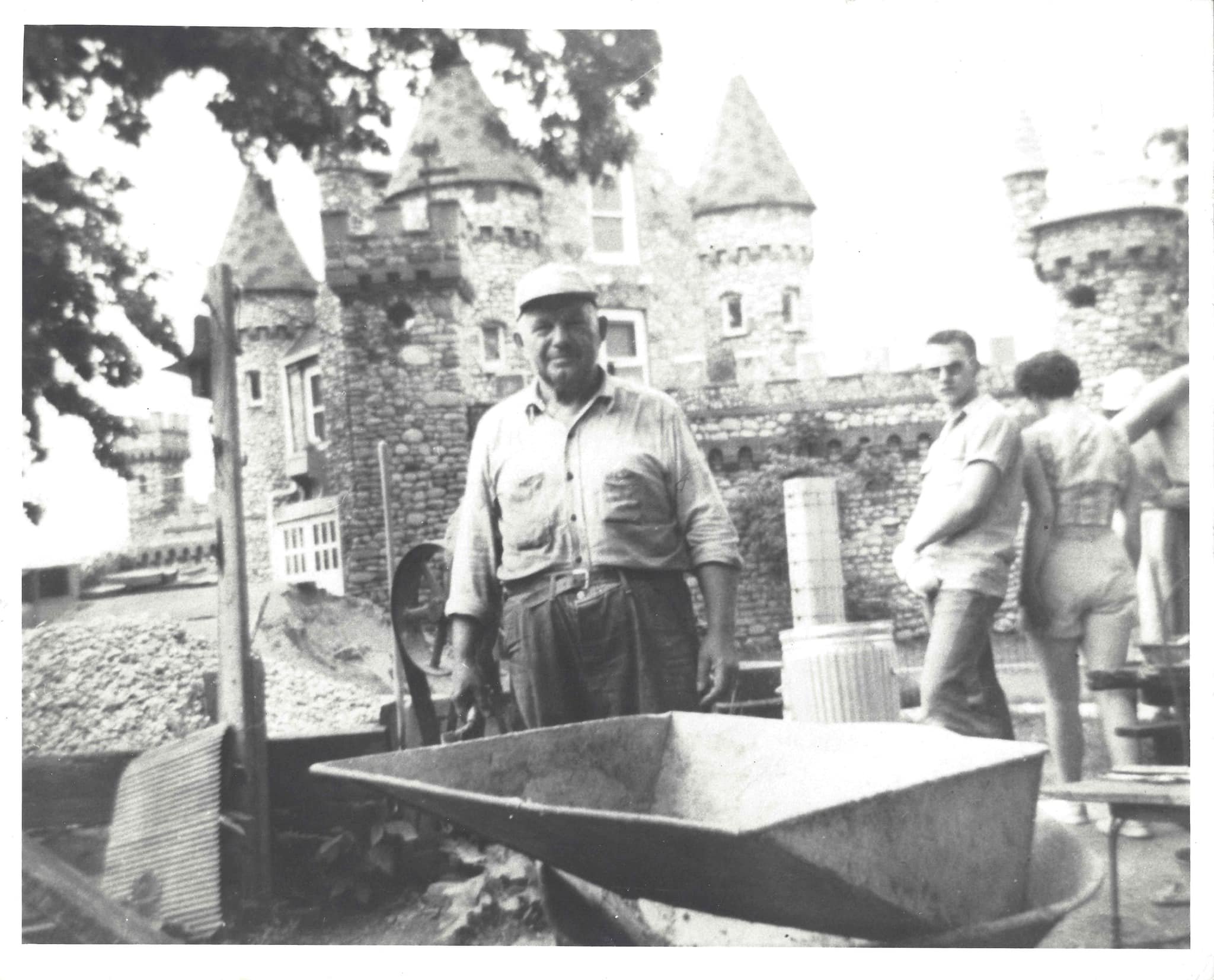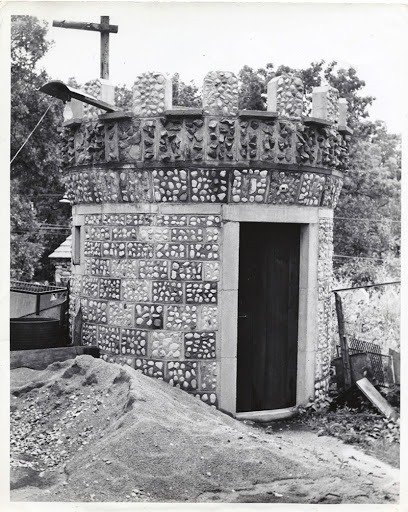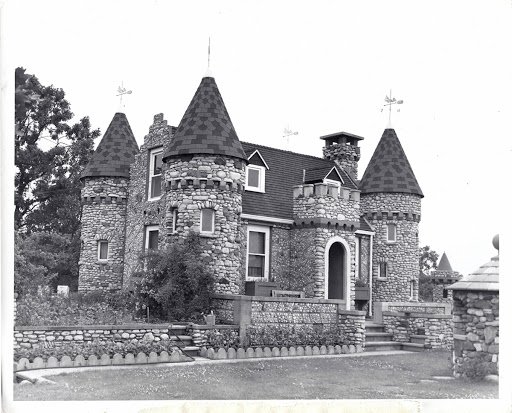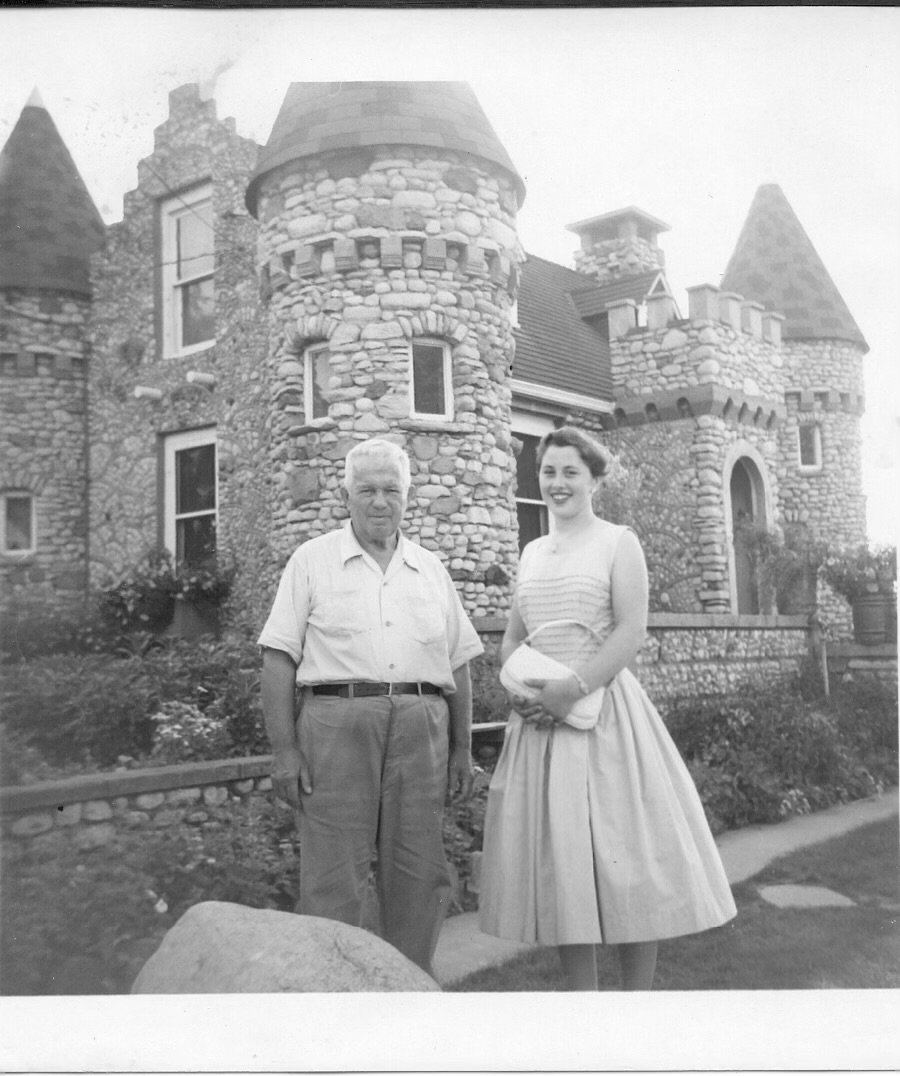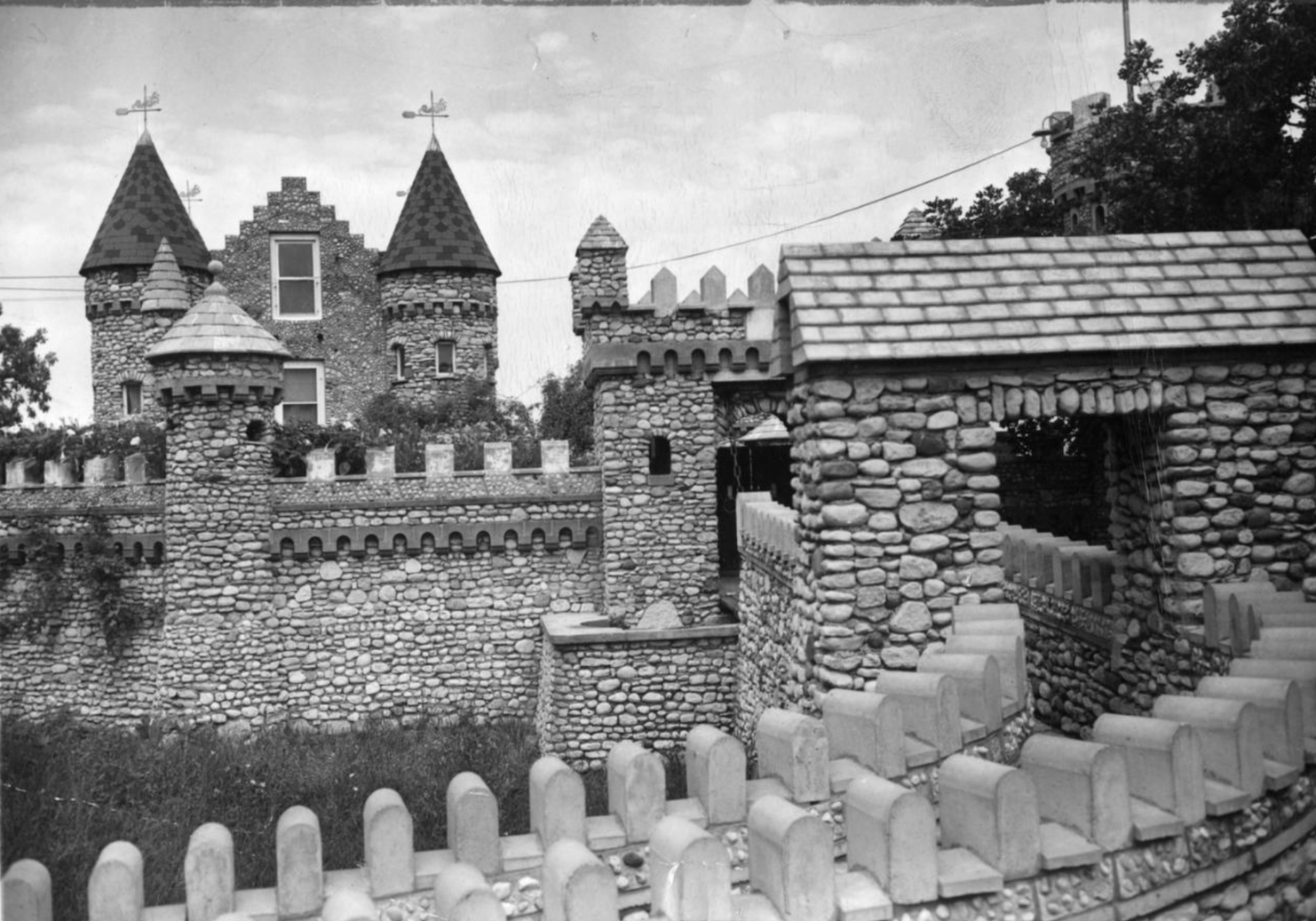Bettendorf Castle of Fox River Grove
Ted Bettendorf built his castle home in Fox River Grove from the ground up – once piece at a time – till the day he died.
By Patrick King
When I was a child, we would often ride the Chicago Northwestern commuter train from Ringwood to Chicago. Back then, the ride was a long one, made longer by stinky train cars and itchy mohair seats. But for a kid on his way downtown, there were two sites that always made the trip worthwhile: the magnificent Chicago skyline and an enchanting castle high on a bluff, along the tracks running through Fox River Grove.
The castle, back then, was in clear view as the bluff was more barren of trees and underbrush and, as I recall, this almost Disney-like structure was colorfully illuminated at night.
Fifty-some years later, as a member of the McHenry County Historical Society (MCHS), I finally had the opportunity to walk the grounds and learn the origins of this childhood mystery, the Bettendorf Castle.
So who built this castle and what inspired the builder? For the answers we must go back to 1916. World War I was raging in Europe, and a 17-year-old immigrant named Theodore Bettendorf emigrated to America from far-away Luxembourg. He brought with him an everlasting memory of his boyhood days – days of roaming the abandoned halls and passageways of the once-grand 11th-century Vianden Castle located high on the banks of the Sauer River in Luxembourg.
MAKING A VISION REALITY
It was during the Great Depression that Bettendorf – eventually known as Ted to the locals – purchased land along what is now Route 14, atop a bluff overlooking Fox River Grove. It is there he single-handedly began to make his life’s dream a reality, his version of the Vianden Castle.
Bettendorf began his project by applying a stone veneer to his modest three-room house, but by the winter of 1932, it was quite evident that he was doing much more than just sprucing up a little house. The footprint of a lone castle now appeared upon that bluff, complete with turrets. By 1951, the castle had grown to include a drawbridge, moat, towers and turrets, a guardroom, castle yard and bugle tower.
Because of the building site’s location, there was an abundance of a castle’s main ingredients: sand and stone. To quarry his materials, Bettendorf had to do it in such a way as to not lose his lofty bluff, so “Ted the castle builder” had to also become “Ted the miner.” By digging 50- and 60-foot vertical mine shafts into the bluff’s interior, he was able to acquire most of the stone, gravel and sand needed for his project.
To prevent a potential mining disaster, Bettendorf methodically lined his mine shafts with cement as he burrowed deeper and deeper. He also hauled home stones gathered from nearby fields and quarries in his Model T truck, the same truck he used as a winch to pull and lift materials.
Bettendorf worked a day job as a machinist in Chicago, but for 36 years, he spent his nights and weekends building scaffolding, mixing mortar, laying stone and continuing his unique, and perhaps mysterious, labor of love.
Day by day, stone by stone, Bettendorf’s version of the Vianden Castle grew, only varying from the original by scale and in the elaborate patterning he created with his stones on the exterior walls. His home truly became his castle.
The Bettendorf Castle is of Romanesque design and consists of parapet and fortress walls with a functioning drawbridge topped by hand-cast concrete crenellations. The bastion and tower roofs are all topped with faux slate (dyed, hand-cast concrete) shingles. A former mine has become a perfect oubliette (dungeon). There is a wishing well and even an outdoor garderobe (toilet) but with modern conveniences. The entire complex exterior is constructed mainly of glacial stone using the early 20th-century slip-form method of wall building – the same method developed for building tall concrete silos and grain elevators. When one considers the size and weight of the castle’s building materials, it is evident Bettendorf had a clear understanding of the laws of weight and leverage. The castle interior consists of a 10-room, multilevel living area and is presently undergoing partial renovation.
Bettendorf resided in Fox River Grove for 42 years, worked in Chicago and rode the Chicago Northwestern daily. To forgo those long winter walks to catch the train, he once joked about tunneling to the local train station. I now wonder, maybe he wasn’t kidding!
During World War II, he worked in a defense plant and, because of his castle’s lofty overview of the area, actually became the local air raid warden. Later he saw his castle placed in “Ripley’s Believe It or Not!” chronicles. Ted passed away at 78 years old and to the very end was hard at work building his childhood dream.
THE CASTLE TODAY
Located at 418 Concord Avenue, the castle is now owned and cared for by Michael and Judy Strohl, who took ownership of the castle in 1986. While residing there, they have worked diligently to maintain the original castle exterior and grounds.
The castle was recently honorably plaqued by the MCHS. By plaquing this unique structure and its grounds, the history – and for some of us, the answers – of the Bettendorf Castle will forever be documented at the MCHS. Today it is open for weddings, childreh’s activities and tours.
Winston Churchill said, “We shape our buildings; thereafter they shape us.” This is very true, especially here in McHenry County. MCHS invites people with architectural and/or historically significant buildings, homes, businesses, farms, etc., to apply for a plaque.

